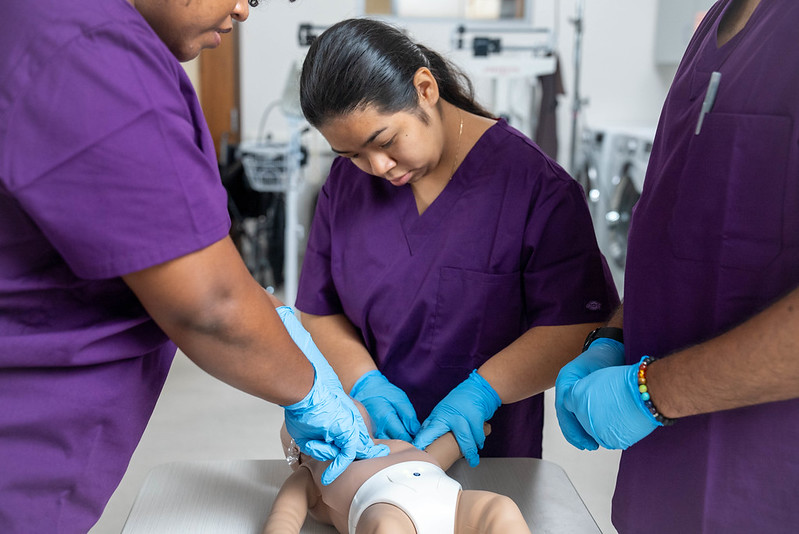ELL-Inclusive Instructional Strategies for Nurse Assistant Training
Submitted By: Jesus Rivas
San Diego Adult Education Regional Consortium
Website: https://sdcce.edu/job-training/health-career-training
Type of Practice: Learner Transition
Program Area(s): CTE / Workforce Prep / Pre-apprenticeship
Region: San Diego - Imperial
Consortia Involved: San Diego Adult Education Regional Consortium
The Program of Practice
The Healthcare Careers department at SDCCE observed persistent disparities affecting adult English Language Learners (ELLs) enrolled in the Nurse Assistant Training course. Through certification exam data, it was identified that most students who failed the state written exam were non-native English speakers, despite successfully completing practical assessments and class finals. Additionally, faculty observations and feedback revealed that ELL students were more likely to struggle with content mastery, digital navigation, and overall course persistence. These challenges limited their ability to fully access, complete, and benefit from healthcare career pathways.
The Response
In response, SDCCE initiated a targeted intervention supported by the CAEP ELL Grant. The effort included collaboration between Healthcare Careers (HCC) and English as a Second Language (ESL) faculty, who jointly implemented co-teaching strategies grounded in Integrated Basic Education and Skills Training (I-BEST). Faculty underwent professional development, and together, they revised course materials to remove idioms, address cultural and language bias in assessments, and co-create vocabulary tools and worksheets.
Canvas course shells were redesigned for accessibility, including improved organization and instructional videos. Digital literacy was addressed through in-class tutorials and computer lab support. Career counseling, academic tutoring, and holistic supports—including personal counseling—were also offered to help students navigate challenges inside and outside the classroom. Financial assistance, provided through the Rupe Foundation and LeadingAge, reduced economic barriers by covering costs such as uniforms, textbooks, transportation, and certification fees.
The Unique Features of the Program
This collaborative, grant-funded approach integrates several key features:
• Faculty Collaboration Across Disciplines: ESL and HCC faculty engaged in co-teaching and ongoing planning to design inclusive, language-accessible instruction.
• Integrated ELL Support: ELL tutors, revised content, and digital navigation tools created a classroom environment better suited for non-native speakers.
• Creative Course Design: The department adapted the CNA course schedule to build in time for additional ELL support and language development activities.
• Financial and Career Support Infrastructure: Students received wraparound services funded by philanthropic partners and CAEP resources.
• Equity and Inclusion Practices: Outreach and career placement targeted linguistically diverse communities; faculty hiring emphasized representation; and mannequins of color were introduced to better reflect the student body.
The Outcome
Outcomes tracked through a survey implemented include:
• Median wage gain: from $17.03 (pre-program) to $21.86 (post-program).
• 63% of ELL students secured employment within 0–3 months of completing the program.
• Over 35 students were hired as nurses at local hospitals.
These results have supported continued grant funding and helped secure over $1 million in investment toward the Nursing program, including seed funding for two new healthcare programs. The increased wages also help students and their families better meet San Diego’s high cost of living.
While this program is not being promoted as a model at this time, its structure—including professional development, integrated ELL instructional support, and external partnerships—may be useful for other adult education institutions seeking to address equity gaps in certification-based healthcare programs. Much of the coordination has been implemented by a part-time employee with full-time staff support, suggesting the model is scalable with modest resources.

